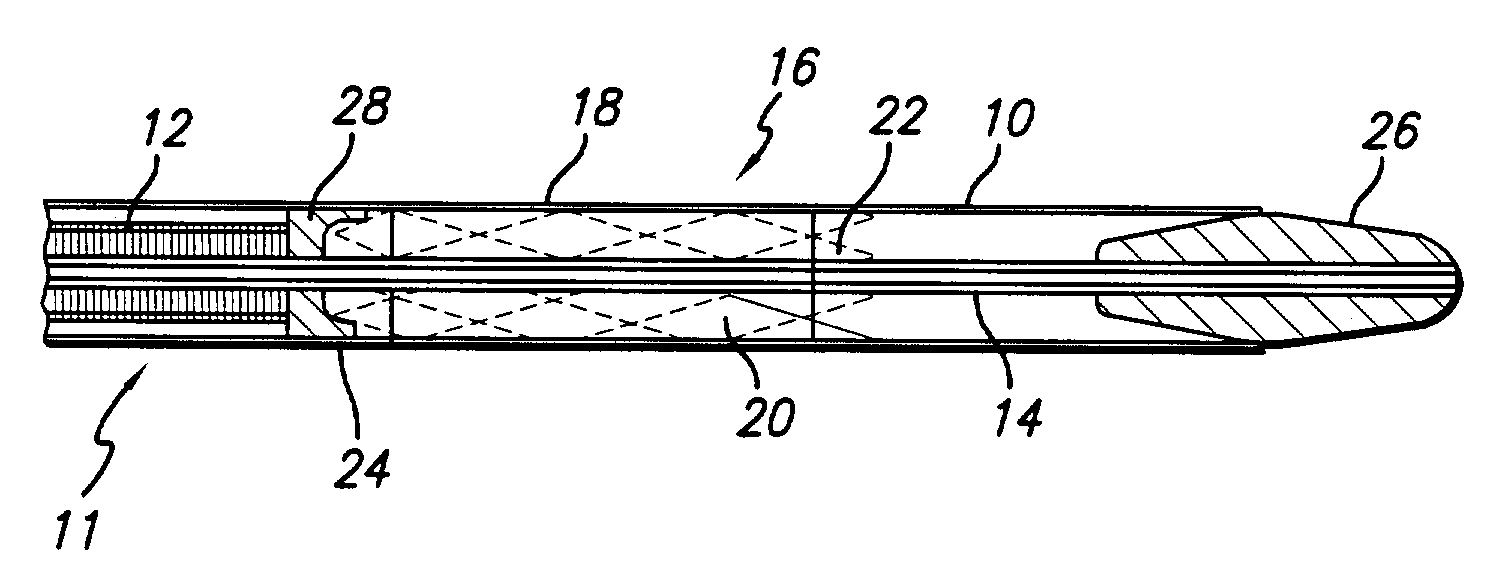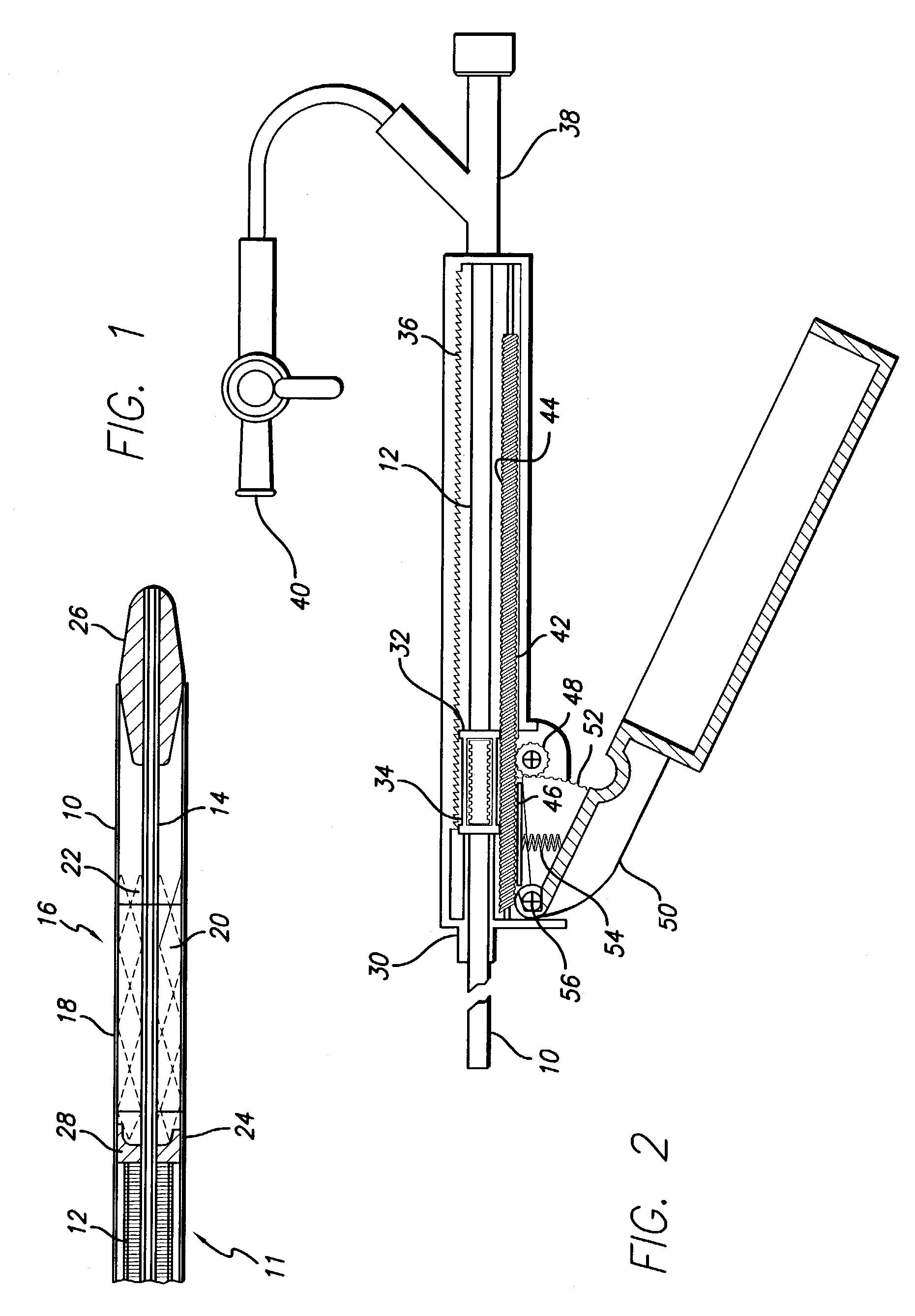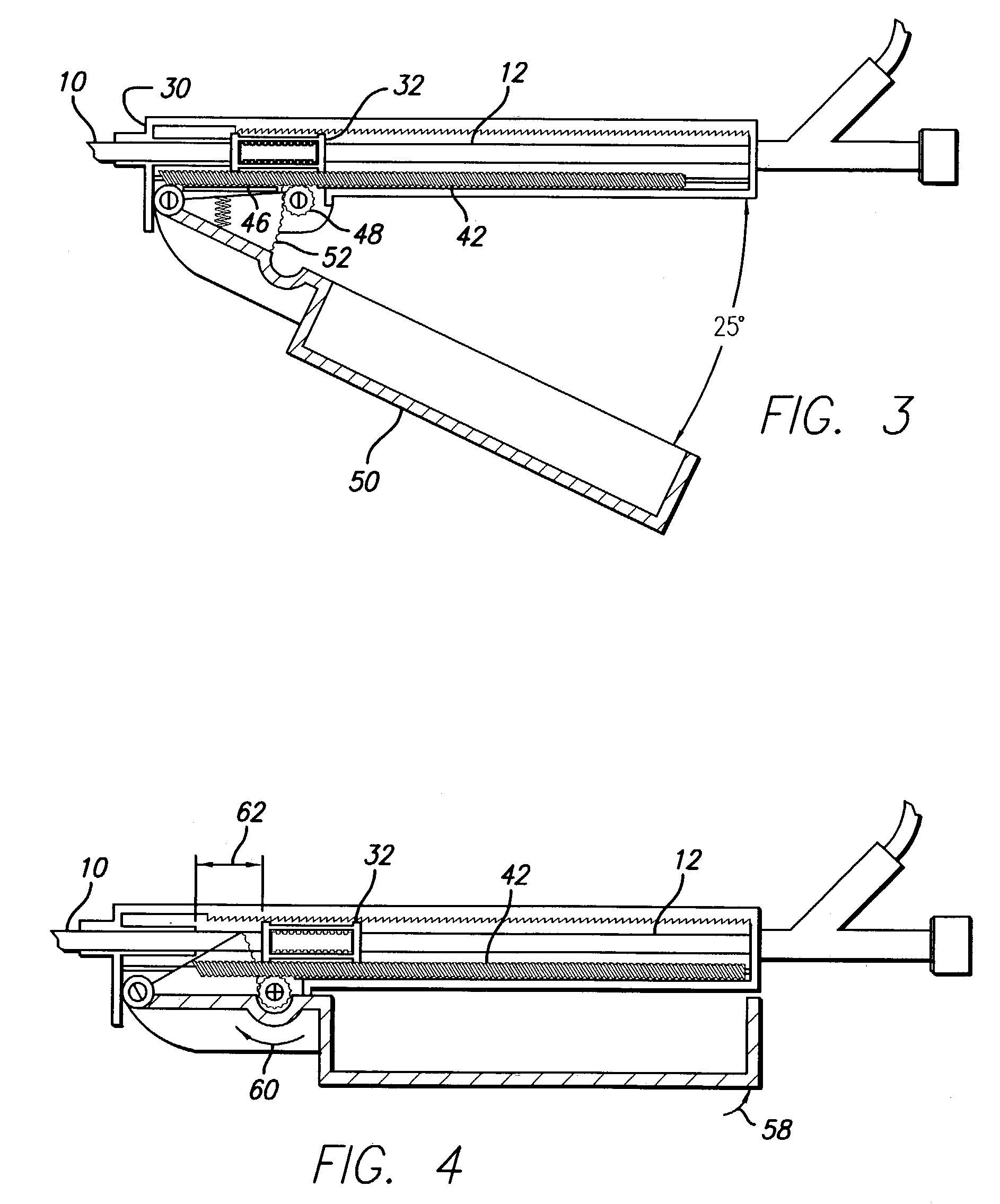Delivery mechanism for implantable stent
a delivery mechanism and stent technology, applied in the field of implantable medical devices, can solve the problems of reducing or complete loss of functional attributes, awkward operation, difficult to maintain steady, etc., and achieve the effects of convenient and precise stent positioning, convenient operation, and smooth retracting
- Summary
- Abstract
- Description
- Claims
- Application Information
AI Technical Summary
Benefits of technology
Problems solved by technology
Method used
Image
Examples
first embodiment
[0032]FIG. 2 illustrates a delivery mechanism for implanting the stent 16. This mechanism is generally in the form of a V-shaped lever device having a housing shell 30 from which the outer sheath 10 extends. The sheath 10 is secured to a pawl / sheath hub 32. A spring pawl 34 attached to the hub 32 engages a ratchet 36 which is integrated into the housing shell 30. Movement of the sheath hub 32 within the housing shell 30 is thus constrained to moving to the right as shown in FIG. 2. The tube spring 12 is secured in a fixed position to a guide wire port 38. The interior of the device may be. flushed by means of a flush stop cock 40. A ratchet rail 42 is provided at the bottom of the housing shell 30 and is reciprocal back and forth within the shell 30. The rail 42 includes ratchet teeth 44 on the upper side which engage with the spring pawl 34 and a rack gear 46 on the bottom surface thereof which engages a pinion 48. The pinion 48 is rotated by means of a lever handle 50 which includ...
second embodiment
[0037]the stent delivery mechanism is illustrated in FIG. 8. This delivery mechanism employs a hydraulic system to achieve extremely smooth operation. A housing 62 defines a reservoir chamber 64 within which is carried a piston 66. The outer sheath 10 is connected to the piston 66 to be moved therewith. A V-cup seal 68 prevents leakage of the hydraulic fluid carried within the housing. A piston displacement chamber 70 is defined between the piston 66 and the opening through which the sheath 10 exits.
[0038]Conduits 72 and 74 are coupled to opposite ends of the piston housing 62. Directional check valves 76 and 78 are contained within the conduits 72 and 74, respectively. A drive plunger 80 is contained within a plunger housing 82. Hydraulic fluid, such as saline solution, is provided through a port 84.
[0039]The operation of the hydraulic mechanism will be described with reference to FIGS. 9–12. In FIG. 9, the reservoir 64 is filled with fluid and the system is ready for operation. In...
third embodiment
[0042]Referring to FIGS. 13–16, the invention will be described. This embodiment employs a rack and pinion mechanism actuated by means of a thumb knob. In FIG. 13, the device includes a housing 82 within which is carried a rack 84, movable from left to right as illustrated in FIGS. 15 and 16. The rack 84 interacts with a rack drive gear 86 coupled to a reduction drive gear 88, which in turn is driven by a knob 90 having a gear 92. The outer sheath 10 is coupled to the rack 84 to be movable therewith. FIG. 14 is a cross-sectional view of FIG. 13 along line 14—14, showing a different perspective of knob 90 in relation to housing 82.
[0043]In operation, the knob 90 is rotated counterclockwise as illustrated in FIG. 15, causing the gear 92 to move in the same direction. This action causes the reduction drive gear 88 and the rack drive gear 86 to move in a clockwise position, which in turn causes the rack 84 to retract within the housing by a distance of approximately 1 cm per revolution ...
PUM
 Login to View More
Login to View More Abstract
Description
Claims
Application Information
 Login to View More
Login to View More - R&D
- Intellectual Property
- Life Sciences
- Materials
- Tech Scout
- Unparalleled Data Quality
- Higher Quality Content
- 60% Fewer Hallucinations
Browse by: Latest US Patents, China's latest patents, Technical Efficacy Thesaurus, Application Domain, Technology Topic, Popular Technical Reports.
© 2025 PatSnap. All rights reserved.Legal|Privacy policy|Modern Slavery Act Transparency Statement|Sitemap|About US| Contact US: help@patsnap.com



